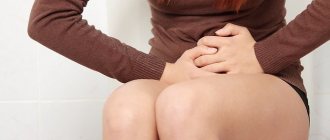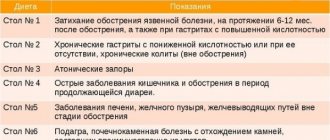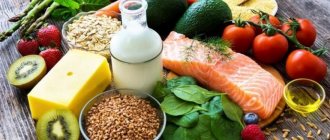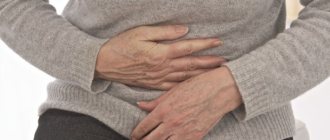An elderly citizen very often faces a difficult situation when it is very painful or completely impossible to go to the toilet. Pathology of the digestive tract is a consequence of concomitant diseases, cancer. We will tell you the causes and symptoms of the disease and what to do in case of intestinal obstruction in older people.
Select a service for your relative | |||
| Caring for bedridden people | Disability care | Elderly care | Care after a heart attack |
Obturation, what is it?
Constipation is a blockage of the genital anatomical formation with a violation of its patency. The patient is no longer helped by strong laxatives, enemas, or dietary nutrition. When going to the toilet he experiences severe pain. In addition, with cancer, the stool has a liquid consistency with bloody discharge. Then you should pay close attention to your well-being and urgently contact a medical facility.
Types of pathology
Young people with this problem rarely go to doctors. People of advanced age suffer from deterioration of peristalsis or improper functioning of blood circulation. The condition of impaired movement of contents during bowel movements is a consequence of reduced mobility and long-term disorders. There are three forms of obstruction:
- Dynamic. The variety can be paralytic (myocyte activity decreases) and spastic (intestinal tone increases). It occurs in a chronic form or has an acute nature, which often leads to death.
- Vascular occurs due to poor blood circulation (for example, heart attack). Both types of intestines become blocked.
- Mechanical. Occurs after surgical intervention. The resulting adhesions can pinch the intestines, be compressed by internal tumors or a vertebral hernia. Often, constipation occurs due to the occurrence of prostate adenoma, which can completely block the passage. The entry of a foreign body also clogs the passage.
Constipation is the main symptom of intestinal obstruction in older people
Obstipation is manifested by difficult or insufficient defecation (feces). The frequency of bowel movements does not exceed two times in seven days. In severe cases, bowel movements occur 2-3 times a month.
Phases of pathology
There are three degrees of the course of OKN:
- "Ileus scream." From the moment the intestinal hemocirculation begins until complete emptying, about 12-14 hours pass. At this time, the eruption occurs with acute pain and muscle spasms.
- Intoxication of the body is accompanied by bloating and decreased gas production. Painful sensations weaken, the cramping nature stops, and they become aching. Emptying occurs after one and a half days. The body is experiencing a lack of water.
- Peritonitis occurs after a person has not gone to the toilet for 36 hours. Inflammation of the peritoneal layers occurs. If timely assistance is not provided, death may occur.
Consequences after self-medication
Therapy should only take place under the supervision of a doctor, that is, in a hospital. Home treatment will not bring positive results, since it is necessary to adhere to conservative therapy, which includes:
- intravenous drips that maintain water-salt balance;
- drugs to normalize peristalsis;
- antispasmodics for pain relief;
- laxatives;
- enemas, where a probe is inserted through the mouth.
If a person ignores conservative treatment, subsequent complications can lead him to the operating table. Part of the organ is removed and a bypass anastomosis is formed.
Rules for proper nutrition
When there is a violation of the movement of foods through the digestive tract, you need to adhere to a strict diet. To do this, you need to follow some rules.
- Meals should be regular. That is, you need to eat at regular intervals. It is best to eat food every two to three hours.
- It is not recommended to overeat. This process can lead to an exacerbation of the disease.
- It is imperative to exclude from the diet products that cause increased gas formation in the patient.
- You need to eat food five times a day. But portions should be small.
If there is obstruction of the intestinal canal, you must adhere to diet numbers 4 and 4B. The diet should not contain solid or fatty foods. It leads to damage to the mucous membrane and makes the digestion process more difficult.
How acute and chronic obstruction develops
The acute phase is characterized by nausea and vomiting. At the initial stage, vomiting occurs with the contents of the stomach, so far without stagnation. The disease is aggravated by loss of fluid (water) and electrolytes. It occurs without a typical pain syndrome; cramping pain occurs only in 30% of the population suffering from acute insufficiency. Retention of stool with continued passage of gas does not occur in everyone.
After a long period, a phase of “imaginary well-being” begins, during which contractions and vomiting stop. Acute pain is replaced by aching, non-localized and dull. At first, the patient feels relief, but soon the stomach becomes very swollen. Intoxication occurs when “fecaloid” vomiting returns with putrid contents resembling feces. Peritonitis then develops. This is due to a slower passage through the intestinal tract. That is, bowel movements occur 2-3 times a week. In addition, there is a slight asymmetrical swelling of the abdomen and cramping pain.
Leave a request for selection of a boarding house
for an elderly person with intestinal obstruction
Causes of intestinal obstruction in older people
The main etiological factors include:
- The appearance of adhesions after surgery.
- Concomitant diseases: acute cholecystitis, inflammation of the appendage of the cecum, pancreatitis, etc.
- Taking certain medications, such as anesthesia medications, opiates.
- The appearance of twists and knots.
- Malignant and benign neoplasms.
- Hernia development.
- Formation of sand and stones in the gall bladder.
- Entry of foreign objects into the gastrointestinal tract.
- Infestation with parasites.
- Sedentary lifestyle.
- Constant diets.
- Sedentary work.
- Dietary fiber can cause a lump to form.
Bruises, bruises, kidney failure, pleurisy, cracked or broken ribs, inflammation of the lungs and pancreas, damage to the central nervous system (strokes, spinal column injuries and skull damage) can also lead to serious illness.
How does pathology manifest itself?
Clinical symptoms look like this:
- Delay in defecation for 36 hours or more.
- The appearance of vomit. Initially, they are caused reflexively and contain food mass that is indigestible by the stomach. At the last stage of the disease, vomiting takes on a yellow-green tint.
- Pain in the peritoneum can be cramping, sharp and aching. If assistance is not provided in a timely manner, a person may lose consciousness from pain.
- The occurrence of flatulence.
- Constipation. This phenomenon can confuse a person, since on the first day he has stool. But the pain and nausea reflex do not stop. After a rectal examination, it is revealed that stagnation of feces has occurred in the small intestine. This leads to the absorption of rotting products and, as a result, to intoxication of the body.
Establishing diagnosis
When a citizen applies to a medical institution, the doctor immediately prescribes an examination:
- Performs abdominal palpation.
- Refers for x-ray examination.
- Blood is taken and sent for analysis.
- The colon and rectum are examined with an endoscope.
- Irrigoscopy is performed using the method of retrograde injection of the drug to obtain an image.
- Examine with ultrasound.
- Carry out computer diagnostics.
Often a rectal examination is used first. Women are scheduled to visit a gynecologist. If the clinic is equipped with the necessary equipment, then they will send you for a survey radiography. With the introduction of a contrast agent, the localization of pathological processes can be accurately determined. Since the disease is often caused by parasites, the feces are examined for the presence of eggs of various helminths.
How to treat intestinal obstruction in older people
Taking any independent action is strictly prohibited! Giving an enema and taking painkillers will not lead to a positive result; they can worsen the situation. You need to urgently go to the hospital for help. They will empty the abdominal cavity with a probe by inserting it into the mouth or nose. If necessary, antispasmodics are prescribed, a novocaine blockade is performed, and a siphon enema is administered.
If droppers with saline solutions do not help (this indicates a mechanical type of pathology), then an emergency operation is performed.
What should relatives do at the first symptoms of the disease in elderly people?
Place the patient on a comfortable bed and place a basin near him to collect the vomit. Call an ambulance, do not take any further action. Do not give painkillers or laxatives under any circumstances.
Causes of constipation
The movement of food occurs due to contraction of the intestinal walls. Impaired peristalsis may be accompanied by relaxation of the muscle layer or prolonged spasms. The cause of the onset of the disease may be:
- surgical intervention;
- taking medications;
- accompanying illnesses;
- formation of nodules, twists;
- tumors;
- hernias;
- the presence of stones in the gall bladder;
- entry of foreign objects;
- bruises, hematomas;
- rib fractures;
- problems with blood vessels;
- traumatic brain injuries;
- presence of helminths.
Symptoms of intestinal obstruction in older people
An elderly person begins to complain of pain in the abdomen, first points to a certain area, then begins to feel painful spasms throughout the entire volume of the peritoneum. At this time, nausea begins, and later vomiting appears. Trying to go to the toilet leads nowhere. On the contrary, diarrhea may develop. The worst thing is if it occurs with blood inclusions. The face and body are covered with cold sweat, the skin becomes noticeably pale, and the person assumes a “fetal” position. He may lose consciousness from pain and intoxication. In such cases, he urgently needs to be taken to the hospital or an ambulance is called. Most likely he will have surgery.
Causes of the disease
Intestinal obstruction is manifested by poor movement of stomach contents into the intestine, which is associated with impaired peristalsis or mechanical obstructions.
The following factors can provoke this condition:
- oncological processes;
- intestinal polyps;
- change of diet;
- change in organ motility;
- severe infectious diseases;
- nerve agent intoxication;
- spasms of the intestinal walls;
- peritoneal adhesions;
- formation of gallstones or fecal stones;
- volvulus;
- ascariasis;
- foreign objects.
Attention! Intestinal obstruction can occur as a complication of other diseases - cancer of the intestine or neighboring organs, abdominal wall hernia, cholelithiasis, helminthic infestation, myocardial infarction.
Diagnostics
Upon arrival at the medical facility, the patient is immediately prescribed an examination, where the following manipulations are performed:
- take blood for analysis;
- feces are passed;
- palpation and rectal examination are performed;
- X-rays are taken;
- conduct research using ultrasound, computer diagnostics, and endoscope;
- perform irrigoscopy measures.
Conservative treatment method
After diagnosis, gastrointestinal tract lavage is prescribed by inserting a probe through the mouth or nose. To relieve pain, injections containing analgesics and antispasmodics are given. To normalize peristalsis in the paralytic form of the disease, Proserin is used. A novocaine blockade is often performed. To maintain the water-salt balance of the body, droppers are placed.
Preventive actions
For an elderly person, it is very important to engage in feasible physical labor, spend less time in bed and move more. This could be: light gymnastics, walking, weeding garden beds, etc.
In addition, he must eat properly and follow a diet. It is necessary to exclude smoked meats, pickles and marinades, spicy and heavy foods from the diet. You should drink at least 1.5 liters of water per day. You should be careful about lifting weights; at this age, a bag weighing 2-3 kg is allowed. Regular examination by doctors will help identify various diseases and the presence of parasites that contribute to the development of constipation.
How doctors examine a patient
When diagnosing, professionals adhere to the following principles:
- Blood is taken during intoxication.
- You can bring feces and other tests with you from home during an exacerbation or take them in the hospital.
- Before radiography, it is necessary to empty the gastrointestinal tract.
All manipulations are carried out only with the permission of the patient or his guardian.
Treatment
The elderly person is left in a hospital bed until he fully recovers. At this time, pain is relieved with the help of analgesics and antispasmodics. If necessary, a blockade is carried out with Novocaine and siphon enemas are given. If such actions do not lead to a positive result, then he is prepared for surgery.
Surgery for intestinal obstruction in the elderly
Removing obstacles occurs as follows:
- The abdominal cavity is opened.
- The contents of the afferent sections of the intestine are removed.
- Resection is performed.
- Bypass anastomoses are formed.
- I apply fistulas.
The outcome of the operation may vary; successful recovery depends on the rehabilitation period.
Types of diet therapy
In case of intestinal obstruction, a menu is drawn up based on the characteristics of the disease: the form of development of the pathology, an operation to remove damaged areas of the mucosa. You need to follow a diet during the period of treatment and rehabilitation of the body.
Exacerbation of intestinal obstruction
The goal of diet therapy during an exacerbation is to prevent the formation and spread of pathogenic microorganisms. On the first day of the appearance of symptomatic signs of obstruction, it is recommended to refuse food for 24 hours. To relieve the manifestations of pathology, only the drinking regime should be observed in the first 24 hours.
During a diet in case of exacerbation of intestinal obstruction, the following should be excluded:
- fatty meats and fish;
- fresh vegetables;
- cereal:
- pearl barley;
- barley;
- millet;
- fermented milk ingredients;
- fresh bread, rolls;
- dried fruits;
- tea, coffee with added milk, cream;
- herbs, spices, salt, sauces;
- sweet carbonated drinks;
- alcohol.
Keeping a diet
After the surgical procedure, the patient is not allowed to drink or eat for 12 hours. Then he is supported by droppers with nutrient solutions injected directly into the intestine. After a few days, the mixture is given to eat through a tube.
When the patient is able to fully consume normal food, he is allowed fermented milk products, soups cooked in water without adding fat, and baby food. He must follow diet No. 4, where all dishes are cooked boiled or steamed with a minimum amount of salt.
Menu
The diet is determined by the attending physician and is observed for three to four weeks after surgery. A person can eat:
- White meat chicken and turkey pate.
- Kefir, fermented baked milk, yogurt, cottage cheese.
- Vegetables and fruits chopped in a blender.
- Liquid in unlimited quantities. Only mineral or regular water should be alternated with beet, carrot, apple, peach and apricot juices.
Fried, smoked, grilled and fatty foods are strictly prohibited. Pepper and other spices, strong-smelling herbs, acidic foods (lemon, cranberry, orange, tangerine, etc.) are excluded from the diet. After the operation, you should not drink alcoholic beverages, tea, coffee or carbonated mineral water!
Sample menu
An approximate diet menu for chronic intestinal obstruction will consist of:
- breakfast - any porridge cooked with water or with the addition of a small amount of milk, cottage cheese soufflé and tea;
- second breakfast - dried fruits;
- lunch – low-fat meat broth, rice porridge with steamed meatballs and jelly;
- afternoon snack – apples and kefir;
- dinner - steam omelette, buckwheat porridge and tea;
- before bed – jelly or a glass of kefir.
A more clear and detailed nutrition plan is drawn up by the attending gastroenterologist individually for each patient. The results of examinations and the general condition of the patient are taken as a basis.
Dietary nutrition for chronic intestinal obstruction can not only prevent the onset of an exacerbation period, but is also an excellent preventive measure against the deterioration of the patient’s condition.











